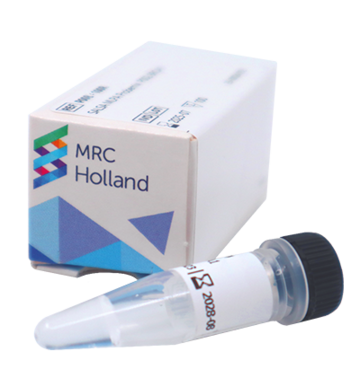P065 Marfan Syndrome-1

SALSA® MLPA® probemixes P065 Marfan Syndrome-1 and P066 Marfan Syndrome-2 detect copy number variations in the FBN1 gene.

Contents: P065: 52 MLPA probes, including 9 probes for TGFBR2, and 34 probes for FBN1
P066: 49 MLPA probes, including 36 probes for FBN1

Tissue: genomic DNA isolated from human peripheral whole blood.

Application: Marfan syndrome and other FBN1-related disorders.

IVDR certified and registered for in vitro diagnostic (IVD) use in selected territories. Not all targets are for IVD use.
